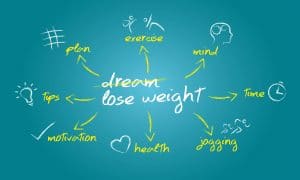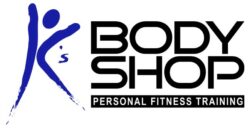In part one of this series, we looked at our past successes and disappointments, lessons learned, what obstacles prevent us from achieving our goals, what our personal values and negative drivers are, and what roles we play in our daily lives. It’s important to go through all of that prior to actually sitting down and setting goals if you want to improve your chances of actually achieving them. Now, we’ll get to the meat and potatoes: actually setting our goals!

SMART Goal Setting
What are your goals for each role that you identified in part one? This is where the SMART goal setting comes in to play:
S = Specific. Clearly defined.
M = Measurable. How many, how much.
A = Attainable. Something that you think you’ve got at least an 80% chance of achieving.
R = Realistic. Something that is relevant to your vision and is compatible with your values.
T = Time bound. When the goal will be accomplished.
We want SMART goals that are powerful and meaningful to you – something that you get excited about. If it doesn’t drive you or excite you, you’ve probably chosen something from the “ought to do” list rather than “really, really want to do” and are basically setting yourself up for failure. Since I am a professional personal trainer, most of the time I am helping my clients identify their health and fitness goals rather than all of the other life roles, though it needs to fit in with their life goals too. So, here are some examples of SMART goals that pertain to health and fitness:
“I will lose 20 pounds of fat in the next year.”
S = specific – fat loss. M = measurable – 20 pounds. A = attainable – 20 pounds of fat loss in 52 weeks is very doable. R = realistic – relevant to improving health. T = time bound – 1 year.
“I will run a sub-4 hour marathon at the Twin Cities Marathon in 2014.”
S = specific – running a marathon. M = measurable – under 4 hours. A = attainable – for a runner with solid base mileage of 15-20 miles per week who is injury free, 8 months is plenty of time for a proper training program. R = realistic – sub-4 marathon is realistic for most recreational runners if they are properly trained. T = time – the Twin Cities Marathon will be held on October 5 in 2014.
Top 10 Goals
As I mentioned earlier, if you went through all of the steps in part one, you most likely have several goals in different areas of your life. Try to make one of your roles your major focus for a certain period of time (ie 1 year). Now it’s time to solidify your goals and whittle them down to no more than 10 of the most important. Any more than that is just too overwhelming for most people – you can only do so much at a time. For each goal, ask yourself these questions:
Are you willing to do whatever it takes to achieve these goals?
Does any goal conflict with your core values?
Is anything getting too much attention at the expense of something else?
Are your goals realistic, achievable, and do they excite you?
If the answer is no to any of these questions, cross it off the list.
Achieve Your Goals
Now that you’ve set your major goals, how can you be sure that you achieve them?
Share your goals with family, friends, co-workers to help hold you accountable. For my regular clients, they have me for accountability, guidance, and support.
Break your larger goals down into smaller goals and keep them written down in an area where you can review them daily. For the marathon runner, I will be writing weekly and daily training plans for each run, strength training exercise, flexibility training, etc. For the weight loss client, we will be focusing not only on weekly and daily exercise but also nutrition planning for each meal. Once you break things down into steps that you do each day, the big goal is no longer so overwhelming and you have a road map to success.
People who succeed write out their plans and track their progress. There will be hiccups from time to time – some things you have control over and others you don’t. Remember – focus on the positive things that you’ve accomplished so far, learn what went wrong, then readjust and move on. You’ll get there.
Everything you need to succeed is already within you. It’s my job to help you find it.
